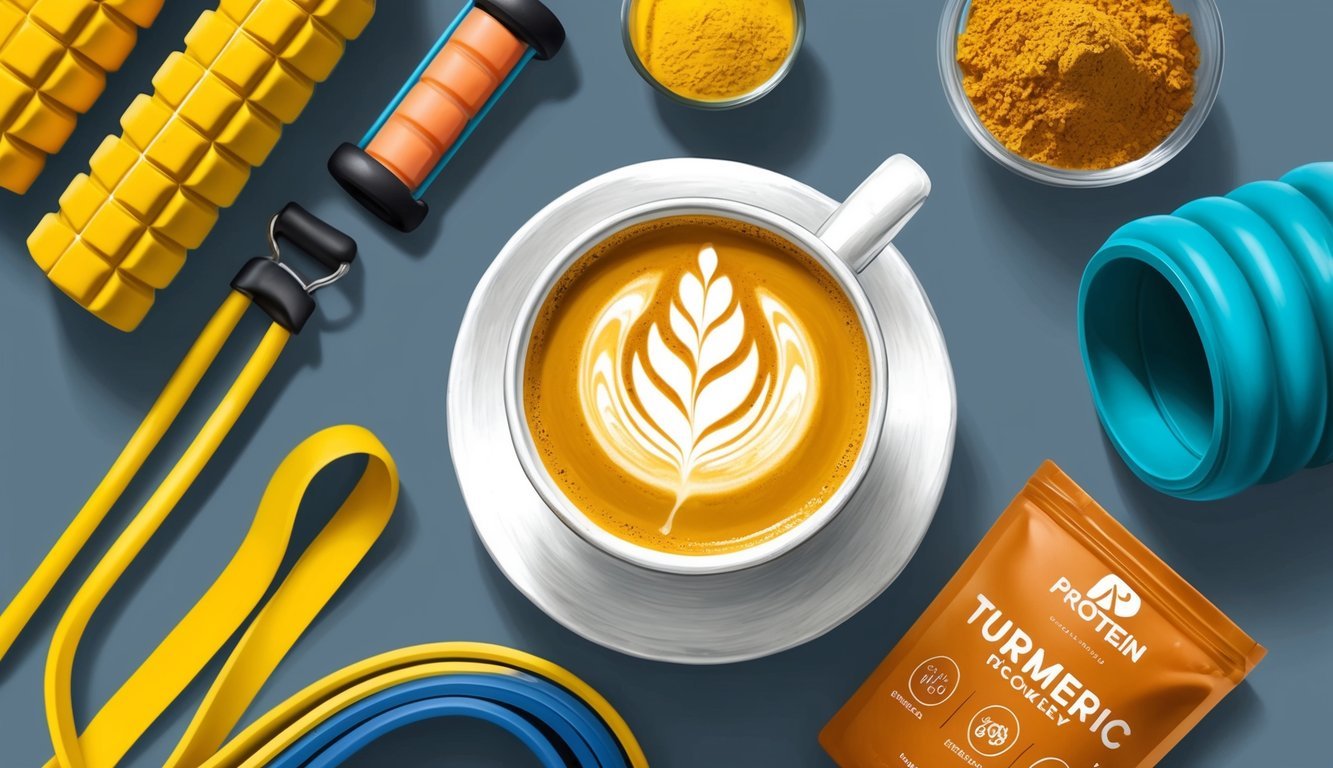After a tough workout, I often wonder how to best recover and get my muscles back to feeling great.
Recovery isn’t just about resting.
It involves a mix of strategies that can make a real difference in how I feel later on. Knowing how to effectively recover can help me reduce soreness, prevent injuries, and keep me motivated to stay active.

I’ve gathered some of the best strategies that have worked for me and others in the fitness community.
From nutrition to hydration and even some targeted recovery techniques, these methods can help optimize my post-workout routine.
Implementing the right strategies is key to making the most of each workout session.
1) Hydration with Coconut Water
After a tough workout, I love reaching for coconut water.
It’s a natural source of electrolytes, which helps replenish what I lose through sweat.
The potassium in coconut water is especially important for muscle recovery.
It supports nerve function and keeps my muscles working smoothly.
I also appreciate its refreshing taste.
It’s a great way to hydrate without added sugars often found in sports drinks.
When I’m pushing through long runs, I sip on coconut water every 15-20 minutes.
This helps me stay hydrated without feeling bloated from drinking too much at once.
Its unique blend of vitamins and minerals provides a nice boost after intense exercise.
Coconut water not only quenches my thirst but supports my recovery routine.
Protein shake with whey
After a tough workout, I always reach for a whey protein shake.
It’s one of my go-to recovery strategies.
Whey protein is a complete protein, meaning it has all the essential amino acids my muscles need for repair.
I love how quickly it gets absorbed into my body.
Consuming it within 30 minutes after exercising is ideal for maximizing muscle recovery.
Aim for about 20-30 grams in your shake to really boost recovery.
I often mix my whey protein with water or milk.
Sometimes, I’ll throw in a banana or some berries for added nutrients and flavor.
The combination of protein and carbohydrates helps replenish my energy stores.
There are so many flavors available, so I can switch things up to keep it interesting.
Whether it’s chocolate, vanilla, or something fruity, there’s always a choice that satisfies my cravings.
Plus, it’s a convenient option when I’m on the go.
3) Foam rolling for muscle release
Foam rolling is a game changer for muscle release after a workout.
I’ve found it really helps reduce muscle soreness and tightness.
Rolling out those knots can make a big difference in how I feel the next day.
Studies show that foam rolling can improve range of motion too.
I usually spend about 10 to 20 minutes on it after exercising, focusing on the areas that need the most attention.
It’s essential to listen to my body during this time.
I try to keep each targeted area rolling for at least 30 seconds.
That seems to be the sweet spot for effectiveness.
It’s a bit uncomfortable sometimes, but I know it’s worth it for faster recovery.
I appreciate how foam rolling promotes better circulation.
This helps my muscles get the oxygen and nutrients they need post-workout.
Incorporating it into my routine has made recovery feel smoother and more manageable.
4) Contrast showers for recovery

I’ve found contrast showers to be a game changer for my post-workout recovery.
This method involves alternating between hot and cold water.
I usually start with hot water for about 2 to 3 minutes, then switch to cold for 1 minute.
The beauty of this technique lies in its simplicity and effectiveness.
The heat helps increase blood flow, while the cold water can reduce inflammation.
I tend to repeat this process a few times, sticking to a roughly 3-to-1 ratio of hot to cold.
Many athletes, including those I follow, swear by this routine.
It’s not just about feeling rejuvenated; studies suggest that contrast therapy can help decrease delayed-onset muscle soreness.
I often feel less sore the next day after using this method.
I’ve incorporated contrast showers into my weekly routine.
Whether after intense workouts or just a long week, it’s become an essential part of how I recover.
5) Sleep: Aim for 7-9 hours

After a good workout, I find that proper sleep is crucial.
The National Sleep Foundation suggests adults need between 7 and 9 hours of quality sleep each night.
This amount helps my body recover and rebuild.
When I stick to this sleep schedule, I notice better muscle repair and overall energy levels.
Plus, my cognitive function improves, which helps me stay focused in my next workout.
Sometimes, I need to adjust my sleep time based on how I feel.
If I’m pushing hard in my training, I might aim for closer to 9 hours.
Conversely, after a lighter day, I might get by on 7 hours.
Establishing a routine helps.
I try to go to bed and wake up at the same times.
This consistency makes a big difference in my sleep quality.
Good rest is like hitting the reset button for my body.
I feel ready for whatever comes next.
Stretching routine post-exercise

After a workout, I always make it a point to stretch.
It helps my muscles relax and reduces the tension built up during exercise.
I focus on stretches that target all the major muscle groups.
A simple routine can include reaching for my toes, pulling my arms across my chest, and doing some gentle twists.
One of my favorites is the Cat-Cow stretch.
It feels great for my back and helps me improve flexibility.
I position myself on my hands and knees, inhaling as I arch my back and exhaling as I round it.
I also like to include a few hip openers.
These stretches not only feel nice but also help with mobility.
I often sit cross-legged and lean forward, which provides a good stretch for my hips and lower back.
Incorporating a stretching routine becomes a relaxing way to close out my workouts.
It’s a simple practice that significantly contributes to my recovery.
7) Compression garments for recovery

I’ve found that compression garments can be a handy tool for post-workout recovery.
Wearing these tight-fitting clothes, like sleeves or tights, can help support my muscles.
This support seems to assist in reducing soreness after intense sessions.
Research suggests that compression garments might boost recovery from exercise-induced muscle damage.
I often wear them after tough workouts to help manage muscle soreness.
The snug fit could help with circulation, which might speed up recovery.
However, the evidence isn’t completely clear-cut.
Some studies show mixed results on how effective they really are for recovery.
It’s important for me to listen to my body and decide what feels right after my workouts.
If I notice a difference when I wear compression gear, I’ll keep using it.
If not, there are plenty of other recovery strategies I can try.
Ultimately, experimenting with what works best for me is key.
8) Turmeric latte for inflammation

I’ve found turmeric lattes to be a fantastic addition to my post-workout routine.
Turmeric contains curcumin, known for its anti-inflammatory properties, which can help soothe sore muscles after a tough training session.
Making a turmeric latte is simple.
I usually mix turmeric with warm milk, adding spices like cinnamon and ginger for flavor.
This blend not only tastes great but also packs a healthy punch.
I enjoy sipping on this latte after workouts.
It’s a comforting way to promote recovery while enjoying a delicious drink.
Plus, the antioxidants in turmeric can support overall wellness, which I appreciate.
Incorporating turmeric lattes into my daily routine has been a game changer for managing inflammation.
It’s a gentle and effective way to help my body recover, keeping me ready for my next workout.
9) Epsom salt bath for soreness

I often turn to Epsom salt baths when I’m feeling sore after a workout.
Epsom salt, or magnesium sulfate, is known for its muscle-relaxing properties.
Soaking in warm water mixed with Epsom salt can help ease tension in my muscles.
When I take an Epsom salt bath, I usually soak for about 20 to 40 minutes.
This allows enough time for my body to absorb the magnesium, which may reduce muscle soreness and inflammation.
I like to prepare the bath by adding about two cups of Epsom salt to lukewarm water.
If I’m feeling really tight, I might even take a cold shower beforehand to cool down my muscles.
After my soak, I often feel more relaxed and less tense, which contributes to better recovery.
It’s a simple and affordable way to pamper myself and aid in my post-workout routine.
Why Post-Workout Recovery Matters
After an intense workout, my muscles go through a lot.
When I push my limits, I cause tiny tears in muscle fibers.
This is a normal part of building strength, but I need to focus on recovery to repair these fibers effectively.
Effective recovery can reduce muscle soreness and fatigue.
It also helps maintain my performance in future workouts.
Prioritizing recovery not only supports muscle repair but also enhances overall well-being.
Key components of post-workout recovery include:
- Nutrition: Consuming the right nutrients, particularly protein, helps rebuild muscles.
- Hydration: Replenishing fluids lost during exercise is crucial.
- Rest: Giving my muscles time to heal prevents overuse injuries.
The Science Behind Recovery
Muscle recovery is a complex process influenced by various biological mechanisms.
During exercise, my body releases stress hormones like cortisol, which, while necessary, can be detrimental if not managed.
The body shifts into a repair mode after a workout, where protein synthesis takes precedence.
Consuming protein right after exercising is essential.
Research suggests that ingesting about 20 grams of protein within 30 minutes optimally stimulates muscle repair.
In addition, factors like sleep quality and active recovery (like light stretching or walking) can enhance blood flow.
This promotes healing and reduces soreness.
Understanding how recovery works empowers me to tailor my post-workout routine effectively.
Nutritional Support for Recovery
Eating the right foods and staying hydrated are key to effective post-workout recovery.
Proper nutrition helps with muscle repair, replenishes energy, and supports overall recovery so I can bounce back stronger.
I also prioritize getting enough protein and healthy carbohydrates to fuel my body and reduce soreness.
Staying consistent with these habits, along with adequate rest, makes a huge difference in how I feel after exercise.
Additionally, I’ve found that some simple postpartum recovery tips, like gentle stretching and staying hydrated, can support overall wellness even beyond workouts.
Best Foods for Muscle Repair
I like to focus on foods that provide a good mix of protein, carbohydrates, and healthy fats after a workout.
Here are some of my favorite options:
-
Fatty Fish: Salmon and sardines are loaded with omega-3 fatty acids and protein, which are great for reducing inflammation and aiding muscle repair.
-
Lean Proteins: Chicken breast, turkey, or plant-based options like lentils deliver essential amino acids for muscle recovery.
-
Complex Carbs: Foods like sweet potatoes and quinoa help replenish glycogen stores, giving me more energy for my next workout.
-
Eggs: Packed with protein and healthy fats, eggs are great for muscle recovery.
I usually aim for a meal with at least 20 grams of protein shortly after exercising to kickstart my recovery process.
Importance of Hydration
Staying hydrated is just as crucial as what I eat.
During workouts, I lose fluids through sweat that need to be replaced.
Here’s what I focus on:
-
Water: I make sure to drink plenty of water before, during, and after my workout.
-
Electrolytes: Sometimes I include drinks that provide electrolytes, especially after intense workouts. These help maintain proper muscle function and fluid balance.
-
Timing: I try to hydrate immediately after exercising. I aim for about 16–24 ounces of water.
By paying attention to both what I eat and drink, I set myself up for a quicker recovery and better performance in my next session.

